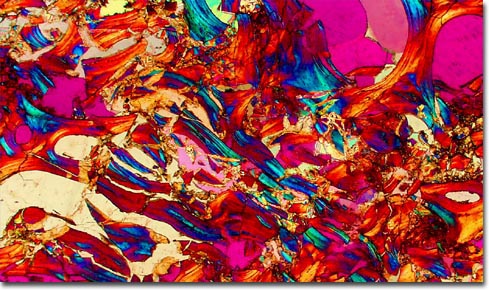|
Osteons, which are also known as Haversian systems, exist in both primary and secondary types. Primary Haversian systems form on the surfaces of growing bone, vessels in the membrane surrounding the bone eventually coming to be encircled by the dense, calcified tissue. Though the canal that houses the vessels in the bone is initially much larger in diameter than the vessels themselves, osteoblasts lining the channel produce new layers of bone until it becomes a much narrower structure surrounded by the concentric lamellae that are characteristic of osteons. Secondary Haversian systems, however, form deep within the cortex, rather than along the surface, of bone, typically from other channels that have eroded. Indeed, erosion of old canals and the formation of new ones in a continuous process, which helps the bones of the living adapt to changes in stress, metabolism, and other bodily conditions.
|
